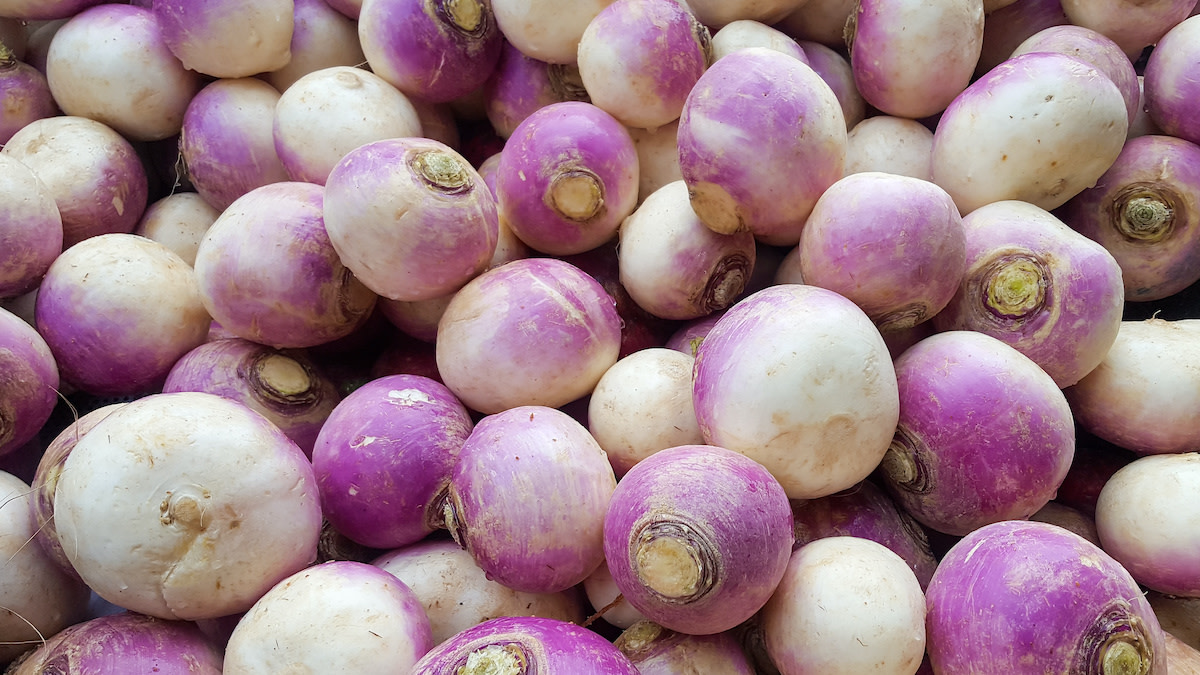Rutabaga vs. Turnip: Differences Between the Root Vegetables
Written by MasterClass
Last updated: Sep 6, 2021 • 2 min read
If you’re trying to decide between using a rutabaga or turnip for an upcoming recipe, find out how they’re different and similar.
Learn From the Best
What Are Turnips?
Turnips (Brassica rapa) are white root vegetables belonging to the Brassica family, along with cauliflower, Brussels sprouts, and broccoli. Round in shape and white or purple in color, turnips have crunchy white flesh that taste bitter and similar to cabbage when eaten raw.
In certain parts of the United Kingdom (as well as certain provinces in Canada), turnip might refer to a rutabaga, a similar root vegetable with yellow coloring. Radishes are another root vegetable sometimes confused for turnips; however, common radishes are entirely purple and usually smaller than turnips.
What Are Rutabagas?
Rutabagas (Brassica napus) are a type of oblong root vegetable similar to turnips, although rutabagas are actually the result of a cross between turnips and cabbages. They have a slightly bitter taste and are usually yellow or purple in appearance. In different areas of the world, people sometimes call a rutabaga a swede, Swedish turnip, yellow turnip, turnip, or neep (in Scotland).
Rutabaga vs. Turnips
Rutabagas and turnips (sometimes also called white turnips) are in the same plant family and share similarities in appearance and texture; however, they are different species. Here are more points of consideration between the two root vegetables:
- Coloring: Rutabagas generally have yellow skin with hints of purple and yellow flesh, whereas turnips often have a purple top and white skin paired with white flesh.
- Family: Both rutabagas and turnips are members of the larger Brassicaceae (shortened as Brassica) or cabbage family of veggies; however, they are different species—Brassica rapa (turnips) and Brassica napus (rutabagas). Other members of the Brassica family include radishes (Raphanus raphanistrum), cabbages (Brassica oleracea), and rapeseed (Brassica napus).
- Nutrition: White turnips and the yellow flesh of rutabagas both contain dietary fiber and vitamin C.
- Preparation: Using a vegetable peeler on rutabagas or turnips is up to you. If you’re planning on making a mashed rutabaga or turnip meal, it’s probably best to use a peeler as you’d likely do the same for mashed potatoes. If you’re just throwing them in a crisper, you can leave the skin on but should discard any rutabaga or turnip leaves. Still, both turnip greens and rutabaga greens are edible in their own right too.
- Taste: Both rutabagas and turnips taste similar to cabbage, but the former is slightly sweeter than the latter.
- Usage: Once rutabagas and turnips have reached the end of their growing season, you can use either or both of them alongside other vegetables like beets and parsnips in stews and casseroles.
Want to Learn More About Cooking?
Become a better chef with the MasterClass Annual Membership. Gain access to exclusive video lessons taught by the world’s best, including Alice Waters, Gabriela Cámara, Niki Nakayama, Chef Thomas Keller, Gordon Ramsay, Yotam Ottolenghi, Dominique Ansel, and more.
